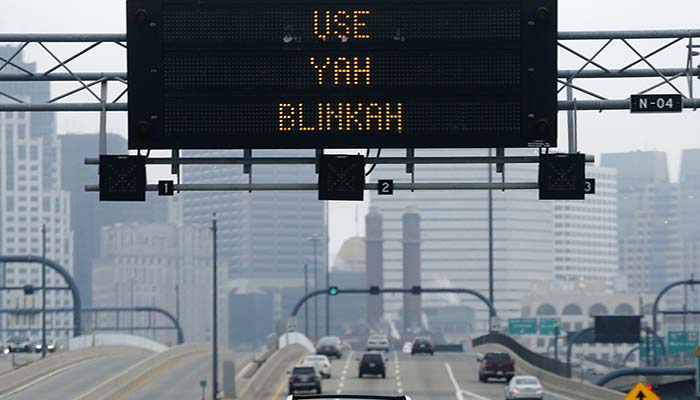Some of you may recognize the reference to Billy Joel. In this song he was focused on the speed at which children want to grow up. I, however, am talking about the speed and aggressiveness demonstrated by drivers.
I have the unenviable task of driving in and out of Boston everyday and, despite the fact that my commute takes place at a very early hour, the trip can take anywhere from 45 minutes to 1 1/2 hours or more. It may be worth noting that I live a mere 13 miles from work. So I can certainly appreciate how drivers may find the commute frustrating. However, I have noticed a pattern of behavior that is unacceptable and, frankly, dangerous.
A few examples of this are the dashes across multiple lanes (without signaling, of course); driving dangerously close to the vehicle in front of you; bypassing the line of cars in cue to take an exit and cutting someone off as close to the front of the cue as possible; and, my personal favorite, not stopping for the individual that is using the crosswalk to traverse the street. I’m sure you can all think of examples of your own.
I am not here to get into the debate of how irrational this behavior is, or to discuss how it really doesn’t get you to your destination any faster. Rather, I want to focus on the residual affect this aggressive behavior has had on the rest of us and, in particular, on me. I find that I have now become a more aggressive driver. I will drive closer to the car in front of me than I should. I will get unreasonably upset with the person cutting into the line. I’ve also noticed the toll that this is taking on my stress levels – and on my co-workers and family.
We don’t leave that anger/stress in the vehicle when we step out, do we? I know that I am more irritable and have a shorter tolerance level with those around me. Not a great demonstration of leadership, is it?
Now that I’m aware of the affect this is having on me, I am able to address it. As a leader, and we all lead ourselves, I can choose to behave differently. You may remember a quote that says something to the effect; “It’s not what happens to you, but how you react that is important.” I’ve decided to change and I would encourage you to think about it as well. How am I doing it? I’ve taken to imagining that my son (who is nearing the age of getting his license) is driving the other vehicle. I listen to podcasts or classical music on the radio – or I leave the radio off. I consciously let people in and stop for those in crosswalks, and I am distancing myself from the car in front of me. I practice mindfulness, becoming aware of what is happening in my body during the commute (e.g. hands tightening on the wheel, tension in my shoulders, talking to other drivers), acknowledge this awareness, and make a choice about whether this reaction is serving me or not.
Has any of this changed the driving behaviors of others on the road? I don’t know, but I do know that I am far less stressed and angry when I get to my destination. It’s about me putting out into the world what I want to see more of. And, the reality is, while this example is about driving, I’m sure you can think of many others that happen in the office on a daily basis. The response can be the same. Choose differently. Step into your leadership and model what you want to see.
Referring back to the very next line in this Billy Joel song, “You better cool it down before you burn it out.” I welcome hearing about the techniques you are using to identify and positively impact issues through your personal leadership.


December 30, 2021 at 11:04 pm
Good blog. Just your spelling of the word queue was very strange. A Cue is a stick to hit a billiard ball.
In South Africa, I have started carrying stones in my car. People drive very badly here so I punish those that break the law.
So I should learn from yr lesson.